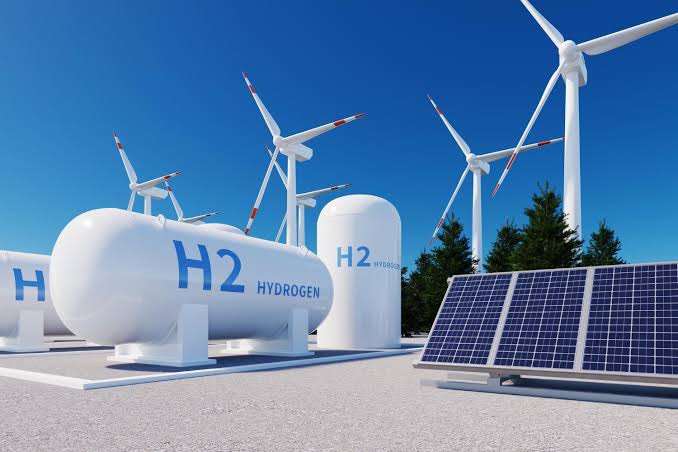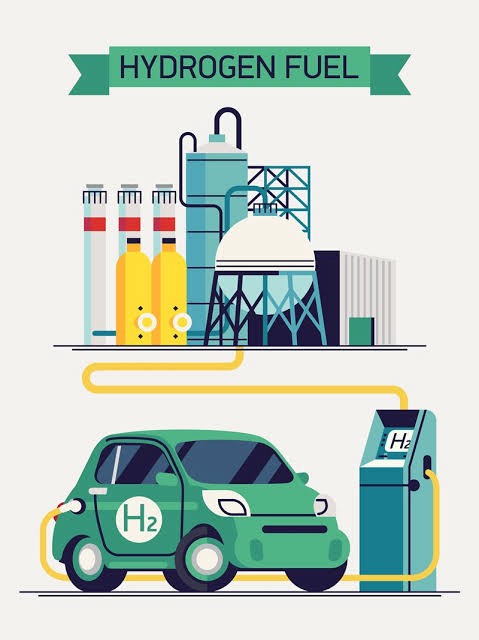
”เราต้องไม่ปล่อยให้‘โอกาสสีเขียว’นี้หลุดลอย“…..อลงกรณ์วันนี้โลกกำลังเผชิญกับความท้าทายครั้งสำคัญจาก วิกฤตโลกร้อน และความผันผวนของราคาเชื้อเพลิงฟอสซิล การเปลี่ยนผ่านไปสู่เศรษฐกิจที่ยั่งยืนและเป็นมิตรต่อสิ่งแวดล้อมจึงเป็นเรื่องที่ไม่อาจหลีกเลี่ยงได้ และหนึ่งใน “เครื่องยนต์ใหม่” ที่จะขับเคลื่อนการเปลี่ยนแปลงครั้งใหญ่นี้ คือการพัฒนา “ไฮโดรเจน อีโคโนมี” (Hydrogen Economy) หรือ เศรษฐกิจฐานพลังงานไฮโดรเจน ทั้งนี้ในส่วนประเทศไทยได้รับการประเมินว่าตลาดไฮโดรเจนคาร์บอนต่ำจะมีมูลค่าสูงถึง 82,000 ล้านบาท ภายในปี 2050 ซึ่งตอกย้ำถึงความสำคัญเชิงเศรษฐกิจของพลังงานทางเลือกนี้ต่ออนาคตของประเทศไทย
นายอลงกรณ์ พลบุตร เจ้าของฉายา “มิสเตอร์เอทานอล” ประธานสถาบันเอฟเคไอไอ ประธานกิตติมศักดิ์และผู้ก่อตั้ง มูลนิธิสถาบันพลังงานทางเลือกแห่งประเทศไทยได้แสดงวิสัยทัศน์โดยเขียนบทความเรื่อง“ไฮโดรเจน อีโคโนมี: เศรษฐกิจแสนล้านฐานพลังงานแห่งอนาคตของไทย”ไว้อย่างน่าสนใจ มีเนื้อหาสาระดังนี้
“เมื่อ25ปีก่อนผมผลักดันโครงการเอทานอล เชื้อเพลิงชีวภาพ (Biofuel) พลังงานสีเขียว (GreetEnergy) จากพืชจนมีการผลิตและจำหน่ายแก๊สโซฮอลล์ในสถานีบริการน้ำมันทั่วประเทศ วันนี้โลกกำลังเผชิญกับความท้าทายครั้งสำคัญจาก วิกฤตโลกร้อน และความผันผวนของราคาเชื้อเพลิงฟอสซิล การเปลี่ยนผ่านไปสู่เศรษฐกิจที่ยั่งยืนและเป็นมิตรต่อสิ่งแวดล้อมจึงเป็นเรื่องที่ไม่อาจหลีกเลี่ยงได้ และหนึ่งใน “เครื่องยนต์ใหม่” ที่จะขับเคลื่อนการเปลี่ยนแปลงครั้งใหญ่นี้ คือการพัฒนา “ไฮโดรเจน อีโคโนมี” (Hydrogen Economy) หรือ เศรษฐกิจฐานพลังงานไฮโดรเจน ไฮโดรเจน อีโคโนมี คือภาพของโลกที่เชื้อเพลิงฟอสซิลถูกแทนที่ด้วยไฮโดรเจนอย่างสิ้นเชิง เป็นการสร้างระบบพลังงานที่ สะอาด มีเสถียรภาพสูง และยั่งยืน
มูลค่าเศรษฐกิจไฮโดรเจน : การลงทุนแห่งอนาคต
ตลาดไฮโดรเจนทั่วโลกแสดงให้เห็นถึงศักยภาพการเติบโตอย่างมากของเศรษฐกิจไฮโดรเจนซึ่งเป็นสัญญาณที่ชัดเจนว่าการเปลี่ยนผ่านกำลังเกิดขึ้นจริง อุปสงค์ทั่วโลกที่พุ่งสูง: ปัจจุบันโลกมีความต้องการไฮโดรเจนประมาณ 95 ล้านตันต่อปี และคาดการณ์ว่าอุปสงค์จะเพิ่มขึ้นเป็น กว่า 150 ล้านตัน ภายในปี 2030 และอาจสูงถึง 400 ล้านตัน ภายใน 25 ปีข้างหน้า
มูลค่าตลาดที่เติบโต:
ตลาดที่เกี่ยวข้องกับการจัดเก็บไฮโดรเจน เพียงอย่างเดียว คาดว่าจะมีมูลค่าเติบโตจาก 1.43 พันล้านดอลลาร์สหรัฐ ในปี 2023 เป็น 4.53 พันล้านดอลลาร์สหรัฐ ภายในปี 2030
การลงทุนมหึมา:
มีการคาดการณ์ว่า การลงทุนในเทคโนโลยี ไฮโดรเจนสีเขียว ทั่วโลก จะต้องใช้เงินลงทุนสูงถึง 100,000 ล้านดอลลาร์สหรัฐ จนถึงปี 2030 และจะเพิ่มขึ้นเป็น 500,000 ล้านดอลลาร์สหรัฐ ภายในปี 2050 ต้นทุนที่แข่งขันได้: ปัจจุบัน ไฮโดรเจนสีเขียว มีต้นทุนอยู่ที่ประมาณ $5-6 ดอลลาร์สหรัฐต่อกิโลกรัม ซึ่งยังสูงกว่าไฮโดรเจนสีฟ้า ($2-3 ดอลล่าร์สหรัฐต่อกิโลกรัม) แต่ด้วยการพัฒนาเทคโนโลยีและการลงทุนขนาดใหญ่ (Economy of Scale) ต้นทุนของไฮโดรเจนสีเขียวมีโอกาสลดลงเหลือเพียงประมาณ 50 บาทต่อกิโลกรัม ในอนาคต
กล่าวโดยสรุป ขณะนี้มีอย่างน้อย 30 ประเทศที่ประกาศนโยบายไฮโดรเจนแห่งชาติอย่างเป็นทางการ
สอดคล้องกับสถานการณ์โลกที่กำลังเผชิญกับการเปลี่ยนผ่านครั้งใหญ่สู่สังคมคาร์บอนต่ำ (Decarbonization)ซึ่งมีตัวอย่างการขับเคลื่อนเศรษฐกิจไฮโดรเจนดังนี้
1. สหภาพยุโรป (EU): มุ่งสู่การเป็นศูนย์กลางซื้อขายไฮโดรเจนโลก โดยมีเป้าหมายติดตั้งเครื่องแยกน้ำไฟฟ้า (Electrolyser) ขนาดใหญ่ถึง 40 กิกะวัตต์ (GW) ภายในปี ค.ศ. 2030
2. ญี่ปุ่น: ตั้งเป้าเป็น “สังคมไฮโดรเจน” แห่งแรกของโลก ญี่ปุ่นใช้กลยุทธ์การนำเข้าเป็นหลัก โดยกำลังบุกเบิก โครงการขนส่งไฮโดรเจนเหลว (Suiso Frontier) ระยะทางไกลจากออสเตรเลีย และตั้งเป้าจัดซื้อไฮโดรเจนและแอมโมเนีย 12 ล้านตันต่อปี ภายในปี ค.ศ. 2040 ซึ่งเน้นย้ำถึงความสำคัญของการสร้างห่วงโซ่อุปทานระดับโลก
3. ซาอุดีอาระเบีย: ผู้นำด้านเชื้อเพลิงฟอสซิลกำลังเปลี่ยนผ่านสู่พลังงานสะอาด โดยลงทุนใน โครงการ NEOM เพื่อสร้างโรงงานผลิตไฮโดรเจนสีเขียวขนาดใหญ่ระดับโลก ด้วยกำลังการผลิตกรีนไฮโดรเจนและแอมโมเนียสีเขียว มากกว่า 650,000 ตันต่อปี ซึ่งเป็นตัวอย่างของการใช้เงินทุนขนาดใหญ่และศักยภาพพลังงานหมุนเวียนเพื่อสร้างความได้เปรียบในการแข่งขัน
4. สเปน: ใช้ศักยภาพพลังงานหมุนเวียนสูงเป็นฐานการผลิต โดยมีเป้าหมายติดตั้งเครื่องแยกน้ำไฟฟ้า 4 กิกะวัตต์ (GW) ภายในปี ค.ศ. 2030 รวมถึงการมี โครงการ Puertollano ซึ่งเป็นโรงงานไฮโดรเจนสีเขียวที่ใหญ่ที่สุดในยุโรป ณ ปัจจุบัน
5.ออสเตรีย โครงการ H2FUTURE ใช้ไฮโดรเจนในการผลิตเหล็กปลอดคาร์บอน แสดงให้เห็นถึงการประยุกต์ใช้ในภาคอุตสาหกรรมหนัก
6.จีน ในฐานะผู้นำด้านเทคโนโลยี ก็กำลังผลักดันการใช้ไฮโดรเจนอย่างกว้างขวาง โดยคาดการณ์ว่าจะมี รถยนต์เซลล์เชื้อเพลิง (FCEV) ถึง 1 ล้านคัน ภายในปี 2035 และมูลค่าผลผลิตในอุตสาหกรรมไฮโดรเจนจะพุ่งสูงถึง 1 ล้านล้านหยวน ภายในปี 2025 โดยมีการสาธิตการใช้ FCEV ในเมืองสำคัญ เช่น ปักกิ่งและเซี่ยงไฮ้
7.สหรัฐอาหรับเอมิเรตส์ (ดูไบ): โครงการ “พืชสีเขียว” (Green Plant) ในเขตเอ็มไพร์สไมล์ ใช้พลังงานแสงอาทิตย์จากโรงงาน 1.3 MW ในการผลิตไฮโดรเจนสีเขียว ลดการปล่อยคาร์บอนได้ กว่า 830 ตันต่อปี
8.ออสเตรเลีย: กำลังพัฒนาโครงการ “Asian Renewable Energy Hub” ขนาดยักษ์ในรัฐเวสเทิร์นออสเตรเลีย ด้วยมูลค่าการลงทุนกว่า 36,000 ล้านดอลลาร์เพื่อผลิตไฮโดรเจนสีเขียวและแอมโมเนียสำหรับส่งออกไปยังตลาดเอเชีย
ประเทศไทยกับเศรษฐกิจไฮโดรเจน
ประเทศไทยเริ่มก้าวเข้าสู่การเปลี่ยนผ่านนี้อย่างเป็นรูปธรรม โดยมีการบรรจุเรื่องพลังงานไฮโดรเจนไว้ใน ร่างแผนพัฒนากำลังผลิตไฟฟ้า (PDP)ฉบับใหม่ซึ่งจะเริ่มมีการใช้ไฮโดรเจนในการผลิตไฟฟ้าตั้งแต่ปี 2030 เป็นต้นไป โดยมีเป้าหมายระยะยาวที่จะใช้ไฮโดรเจนเป็นเครื่องมือสำคัญในการบรรลุเป้าหมายความเป็นกลางทางคาร์บอน (Carbon Neutrality) ภายในปี 2050 โดยเฉพาะการลดการปล่อยคาร์บอนในภาคการผลิตไฟฟ้า ที่กำหนดให้มีการเพิ่มสัดส่วนการผสมไฮโดรเจนในระบบท่อก๊าซธรรมชาติ (Blending) ในโรงไฟฟ้าสูงถึง 25% จนถึง 75% ในช่วงปี 2041-2050 ซึ่งจะช่วย ลดการปล่อยคาร์บอนได้ไม่น้อยกว่า 42% จากระดับปี 2023 นอกจากนี้ ยังมีการคาดการณ์ว่าตลาดไฮโดรเจนคาร์บอนต่ำในประเทศจะมีมูลค่าสูงถึง 82,000 ล้านบาท ภายในปี 2050 ซึ่งตอกย้ำถึงความสำคัญเชิงเศรษฐกิจของพลังงานทางเลือกนี้ต่ออนาคตของชาติ
บทบาทของ ปตท. กฟผ. และบริษัทอื่นๆในการขับเคลื่อนเศรษฐกิจไฮโดรเจน
นอกจากแผนงานของภาครัฐแล้ว หน่วยงานด้านพลังงานหลักของประเทศไทย ได้แก่ บริษัท ปตท. จำกัด (มหาชน) (ปตท.) การไฟฟ้าฝ่ายผลิตแห่งประเทศไทย (กฟผ.) และบริษัทต่างๆได้เข้ามามีบทบาทสำคัญในการขับเคลื่อนเศรษฐกิจไฮโดรเจนอย่างเป็นรูปธรรม โดยมีโครงการนำร่องที่สำคัญดังนี้
กลุ่ม ปตท. (PTT Group): การลงทุนครบวงจรและความร่วมมือข้ามชาติ
1.บริษัท ปตท. จำกัด (มหาชน) (PTT) และ บริษัท ปตท.น้ำมันและการค้าปลีก จำกัด (มหาชน) (OR)ยังคงเป็นแกนนำในการพัฒนาโครงสร้างพื้นฐานปลายน้ำ โดยความร่วมมือกับ โตโยต้า (Toyota) และ บางกอกอินดัสเทรียลแก๊ส (BIG) ในการเปิด สถานีต้นแบบเติมเชื้อเพลิงไฮโดรเจนแห่งแรกในประเทศไทย ที่ อ.บางละมุง จ.ชลบุรี โดยมีการ ต่อยอดโครงการ ให้สถานีดังกล่าวพร้อมรองรับการใช้งานของ รถบรรทุกขนส่งและรถหัวลาก ซึ่งเป็นกลุ่มที่ต้องการพลังงานคาร์บอนต่ำสำหรับการขนส่งระยะไกล
2.บริษัท ปตท.สผ. (PTTEP)ยังคงเดินหน้าโครงการใหญ่ในต่างประเทศ โดยเฉพาะการชนะการประมูลโครงการพัฒนา ไฮโดรเจนสีเขียว (Green Hydrogen) ขนาดใหญ่ใน ประเทศโอมาน ซึ่งเป็นกลยุทธ์สำคัญในการจัดหาไฮโดรเจนคาร์บอนต่ำเพื่อนำเข้าและใช้ในประเทศในอนาคต
3.บริษัท โกลบอล เพาเวอร์ ซินเนอร์ยี่ จำกัด (มหาชน) (GPSC)ในฐานะแกนนำธุรกิจไฟฟ้าของกลุ่ม ปตท. กำลังมุ่งมั่นพัฒนา เทคโนโลยีไฮโดรเจนสีเขียว และสร้าง ห่วงโซ่คุณค่าไฮโดรเจน (Hydrogen Value Chain) เพื่อรองรับเป้าหมาย Net Zero ของกลุ่ม ปตท. และประเทศ
4.บริษัท พีทีที โกลบอล เคมิคอล จำกัด (มหาชน) (GC)ร่วมมือกับ BIG อย่างต่อเนื่องในการผลักดันการใช้ ไฮโดรเจนพลังงานสะอาด ในกระบวนการผลิตและแสวงหาโอกาสพัฒนาธุรกิจใหม่ด้านไฮโดรเจนและคาร์บอน โดย GC มีแผนการดำเนินงานที่สอดรับกับกลยุทธ์ 3 Steps Plus เพื่อมุ่งสู่ธุรกิจคาร์บอนต่ำ
การไฟฟ้าฝ่ายผลิตแห่งประเทศไทย (กฟผ.): มุ่งเน้นการผลิตไฟฟ้าและการกักเก็บพลังงาน
กฟผ. ในฐานะผู้ดูแลความมั่นคงของระบบไฟฟ้า ได้ดำเนินการโครงการเพื่อรองรับการใช้ไฮโดรเจนในการผลิตและกักเก็บพลังงานสะอาด
1.โครงการ Wind Hydrogen Hybrid: เป็นโครงการสาธิตที่ ศูนย์การเรียนรู้ กฟผ. ลำตะคอง จังหวัดนครราชสีมา ซึ่งใช้ไฟฟ้าจาก กังหันลม ในการผลิต ไฮโดรเจนสีเขียว ด้วยกระบวนการอิเล็กโทรลิซิส จากนั้นจึงใช้ไฮโดรเจนที่ได้ไปผลิตไฟฟ้ากลับคืนผ่าน เซลล์เชื้อเพลิง (Fuel Cell) ขนาดกำลังผลิต 300 กิโลวัตต์
2.การวิจัยและพัฒนา: กฟผ. ร่วมมือกับสถาบันการศึกษาเพื่อศึกษาความเป็นไปได้ในการผลิตไฮโดรเจนจากแหล่งต่างๆ เช่น การผลิตไฮโดรเจนจากถ่านหิน ผ่านกระบวนการก๊าซสังเคราะห์ (Coal Gasification) ควบคู่กับเทคโนโลยี การดักจับและกักเก็บคาร์บอน (CCUS) เพื่อให้ได้ไฮโดรเจนคาร์บอนต่ำ
3.แผนการใช้ในโรงไฟฟ้า: กฟผ. มีแผนพัฒนาและเพิ่มสัดส่วนการใช้ไฮโดรเจนในโรงไฟฟ้ากังหันก๊าซ โดยจะเพิ่มสัดส่วนการผสมจาก 5% ในช่วงปี 2574-2583 เป็น 10-20% ในระยะยาว เพื่อให้สอดคล้องกับเป้าหมาย Carbon Neutrality ของประเทศ
นอกจากนี้ยังมีบริษัทเอกชนขนาดใหญ่ในภาคพลังงานและอุตสาหกรรม
1.บริษัท บางกอกอินดัสเทรียลแก๊ส จำกัด (BIG) ในฐานะผู้ผลิตก๊าซอุตสาหกรรมรายใหญ่ ยังคงเป็นผู้เล่นหลักที่สนับสนุนการผลิต จัดเก็บ และขนส่งไฮโดรเจนให้กับภาคอุตสาหกรรมและเป็นพันธมิตรหลักในโครงการสถานีเติมไฮโดรเจน
2.บริษัท ไทยออยล์ จำกัด (มหาชน) (Thaioil)ยังคงเดินหน้าตามกลยุทธ์การกระจายการเติบโต โดยมีการลงทุนในสตาร์ทอัพเทคโนโลยีไฮโดรเจนสีเขียวจากต่างประเทศ เพื่อนำนวัตกรรมมาประยุกต์ใช้ในโรงกลั่นและอุตสาหกรรมในประเทศ
3.บริษัทอื่นๆ ในภาคอุตสาหกรรม บริษัทขนาดใหญ่อื่นๆ เช่น SCG และ GULF ต่างก็มุ่งเน้นการลงทุนในพลังงานหมุนเวียนและติดตามการพัฒนาของไฮโดรเจนอย่างใกล้ชิด เพื่อประยุกต์ใช้ในกระบวนการผลิตเหล็ก ซีเมนต์ และปิโตรเคมี
บทสรุป:
ก้าวสู่เศรษฐกิจไฮโดรเจนการสร้าง“เศรษฐกิจไฮโดรเจน“ต้องพัฒนาระบบนิเวศ(Ecosystem)อย่างต่อเนื่องโดยภาครัฐต้องกำหนดนโยบายที่ชัดเจนเป็นรูปธรรม และสร้างแรงจูงใจในการลงทุน ในขณะที่ภาคเอกชนต้องกล้าลงทุนวิจัยและพัฒนาเทคโนโลยีและสร้างความร่วมมือทั้งในและต่างประเทศส่วนภาคการศึกษาต้องเร่งพัฒนาบุคลากรให้มีทักษะตรงกับความต้องการ
การลงทุนกับไฮโดรเจนในวันนี้ ไม่ใช่แค่การลงทุนกับพลังงานทางเลือก แต่คือการลงทุนกับโอกาสทางเศรษฐกิจใหม่ ความมั่นคงด้านพลังงานของชาติ และสิ่งแวดล้อมที่ยั่งยืนงกันตาม “สี” ของกระบวนการผลิต
1. ไฮโดรเจนสีน้ำตาล (Brown Hydrogen) ใช้ถ่านหินเป็นวัตถุดิบมีการปล่อย CO₂ มากที่สุด
2. ไฮโดรเจนสีเทา (Grey Hydrogen) ใช้ก๊าซธรรมชาติเป็นวัตถุดิบมีการปล่อย CO₂ รองจากไฮโดรเจนสีน้ำตาล
3. ไฮโดรเจนสีฟ้า (Blue Hydrogen) ผลิตจากก๊าซธรรมชาติ แต่ใช้เทคโนโลยีการดักจับและกักเก็บ (Carbon Capture and Storage : CCS)
4. ไฮโดรเจนสีชมพู (Pink Hydrogen) ผลิตโดยแยกไฮโดรเจนจากน้ำ (Water Electrolysis)
5. ไฮโดรเจนสีเขียว (Green Hydrogen) แยกไฮโดรเจนออกจากน้ำโดยไฟฟ้ามาจากพลังงานหมุนเวียนไม่มีการปล่อยคาร์บอน


https://thailandtoday2020news.blogspot.com/2025/10/blog-post_23.html
“Hydrogen Economies: Thailand’s Future Energy Base” from the perspective of “Mr. Ethanol-Alalongkorn”
“We must not let this ‘green opportunity’ slip away”… Alongkorn today, the world is facing a major challenge from the global warming crisis and the volatility of fossil fuel prices. The transition to a sustainable and environmentally friendly economy is inevitable, and one of the “new engines” that will drive this big change is the development of “Hydrogen Economy.” The hydrogen economy is projected to reach THB82 billion in the low-carbon hydrogen market by 2050, underscoring the economic importance of alternative energy to Thailand’s future.
Mr. Alongkorn Ponlaboot, nicknamed “Mr. Ethanol,” President of FKI Institute, Honorary President and Founder of the Institute of Alternative Energy of Thailand, expressed his vision by writing an article entitled “Hydrogen Economy: Thailand’s Future Energy Base” with the following contents:
“25 years ago, I pushed forward the biofuel project from plants to produce and sell gasohol at gas stations nationwide. Today, the world is facing a major challenge from global warming and the volatility of fossil fuel prices. The transition to a sustainable and environmentally friendly economy is inevitable, and one of the “new engines” that will drive this big change is the development of “Hydrogen Economy” or hydrogen energy base economy. Hydrogen Economics is a picture of the world where fossil fuels are completely replaced with hydrogen. It creates a clean, highly stable and sustainable energy system.
Hydrogen Economy Value: Investment of the Future
The global hydrogen market shows tremendous growth potential as a clear sign of transition. Global demand is growing at 95 million tons per year. Demand is expected to rise to over 150 million tons by 2030 and reach 400 million tons within the next 25 years.
Market value growth:
The hydrogen storage-related market alone is expected to grow from US$1.43 billion in 2023 to US$4.53 billion by 2030.
A huge investment:
It is estimated that investments in green hydrogen technology worldwide will require as much as USD100 billion until 2030 and will increase to 500. US$10 billion by 2050: Green hydrogen currently costs about US$5-6 per kilogram, which is still higher than blue hydrogen ($2-3 per kilogram), but with the development of technology and economy of scale, the cost of green hydrogen is likely to drop to around Bt50 per kilogram in the future.
In short, at least 30 countries have now officially announced their national hydrogen policy.
This is in line with the global situation facing a major transition to a decarbonization society, where examples of driving the hydrogen economy are as follows:
1. EU: Towards becoming a global hydrogen trading center with the goal of installing an electric water separator up to 40 gigawatts (GW) by 2030.
2. JAPAN: Targeting the world’s first “hydrogen society,” Japan is based on import strategies, pioneering a long-distance Suiso Frontier project from Australia and purchasing 12 million tons of hydrogen and ammonia annually by 2040, highlighting the importance of building a global supply chain.
3. SAUDIARY: Fossil fuels leaders are transitioning to clean energy by investing in NEOM to build a world-class green hydrogen production facility with a green hydrogen and ammonia production capacity of more than 650,000 tons per year, exemplifying the use of large capital and renewable energy capabilities to gain competitive advantages.
4. SPAIN: Using high renewable energy potential as a production base with a goal of installing a 4 gigawatt (GW) separator by 2030, as well as the existing Puertollano project, Europe’s largest green hydrogen plant.
5. Austria The H2FUTURE project uses hydrogen to produce carbon-free steel, demonstrating its application in heavy industry.
6.China, as a technology leader, is also pushing ahead with the broad adoption of hydrogen. It is expected that there will be 1 million fuel-cell cars (FCEVs) by 2035, and the output in the hydrogen industry will reach 1 trillion yuan by 2025.
7. UAE: The “Green Plant” project in Empire Smile uses 1.3 MW of solar energy to produce green hydrogen, reducing carbon emissions by more than 830 tons per year.
8.AUSTRALIA: Developing a giant “Asian Renewable Energy Hub” project in Western Australia with an investment of more than $36 billion to produce green hydrogen and ammonia for export to Asian markets.
Thailand and the Hydrogen Economy
Thailand has entered a concrete transformation phase with the inclusion of hydrogen in the new Power Development Plan (PDP), which will be implemented from 2030 onwards with a long-term goal of using hydrogen as a key tool for achieving carbon neutrality by 2050. In particular, the reduction of carbon emissions in the power generation sector is set to increase the proportion of hydrogen in the gas pipeline system by 25% to 75% during the period of 2041-2050, which will reduce carbon emissions by at least 42% from 2023. It is also expected that the low-carbon hydrogen market in Thailand will be as high as 82. And the Bt1,000 million by 2050, which underscores the economic importance of this alternative energy to the future of the nation.
Role of PTT EGAT. And other companies to drive the hydrogen economy.
In addition to the government’s plan, the main energy agencies in Thailand are PTT. Public Company Limited (PTT). Electricity Generating Authority of Thailand (EGAT). ) and companies have played an important role in driving the hydrogen economy in concrete terms, with important pilot projects as follows:
PTT Group (PTT Group): Comprehensive investment and multinational cooperation.
1. PTT Company PTT Public Company Limited (PTT) and PTT Oil and Retail Public Company Limited (OR) continue to lead the development of downstream infrastructure in cooperation with Toyota and Bangkok Industrial Gas (BIG) to open the first hydrogen-fueled prototype station in Thailand at A. Bang Lamung Province. Chonburi has extended the project to make the station ready to accommodate trucks and head-trucks, which require low carbon power for long-distance transportation.
2. PTT Company PTTEP continues to pursue large projects overseas, particularly winning bids for Oman’s large-scale green hydrogen development project, which is a key strategy for the supply of low-carbon hydrogen for domestic use in the future.
3. Global Power Syndication Public Company Limited (GPSC) as a leader in the power business of PTT Group. The company is committed to developing green hydrogen technology and creating a hydrogen value chain to meet PTT Group’s Net Zero target. And the country.
4.PTT Global Chemical Public Company Limited (GC) has continuously collaborated with BIG to promote the use of clean energy hydrogen in the production process and seek opportunities to develop new hydrogen and carbon businesses. GC has a 3 Steps Plus strategy to pursue low carbon business.
Electricity Generating Authority of Thailand (EGAT). ): Focused on power generation and energy storage
EGAT, as a security supervisor of the electricity system, has implemented a project to support the use of hydrogen in the production and storage of clean energy.
1. Wind Hydrogen Hybrid Project: A demonstration project at EGAT Learning Center. Lam Ta Kong, Nakhon Ratchasima Province, which uses wind turbines to produce green hydrogen by electrolysis process, then uses hydrogen to generate electricity back through 300 kilowatts of fuel cells.
2. Research and Development: EGAT. Collaborate with educational institutions to explore the possibility of producing hydrogen from sources such as coal hydrogen through the process of synthetic gasification, along with carbon capture and storage (CCUS) technology to obtain low-carbon hydrogen.
3. Power plant plan: EGAT. The plan is to develop and increase the proportion of hydrogen consumption in gas turbine power plants by increasing the mixing ratio from 5% during 1971-1980 to 10-20% in the long run to meet the carbon neutrality target in Thailand.
In addition, there are also large private companies in the energy and industrial sectors.
1. Bangkok Industrial Gas Co., Ltd. (BIG), as a major industrial gas producer, continues to be a major player supporting the production, storage and transportation of hydrogen to the industrial sector and a major partner in the hydrogen filling station project.
2. Thai Oil Public Company Limited (Thai Oil) continues to pursue its growth diversification strategy by investing in green hydrogen technology startups from abroad to apply innovation to refineries and domestic industries.
3. Other industrial companies, such as SCG and GULF, are focusing on renewable energy investments and closely monitoring hydrogen’s
Summary:
To move into the hydrogen economy, the creation of the “hydrogen economy” requires continuous development of the ecosystem. The government must establish concrete policies and incentives for investment, while the private sector must invest in R&D technology and cooperation at home and abroad.
Today’s investment in hydrogen is not just investment in alternative energy, but investment in new economic opportunities, national energy security, and the environment that is sustainable according to the “color” of the production process.
1. Brown Hydrogen uses coal as a raw material with the highest CO ₂ emissions.
2. Gray Hydrogen uses natural gas as a raw material with CO ₂ emissions after brown hydrogen.
3. Blue Hydrogen is made from natural gas but uses Carbon Capture and Storage (CCS) technology.
4. Pink Hydrogen is produced by separating hydrogen from water electrolysis.
5. Green Hydrogen electrically separates hydrogen from water from renewable energy without carbon emissions.






